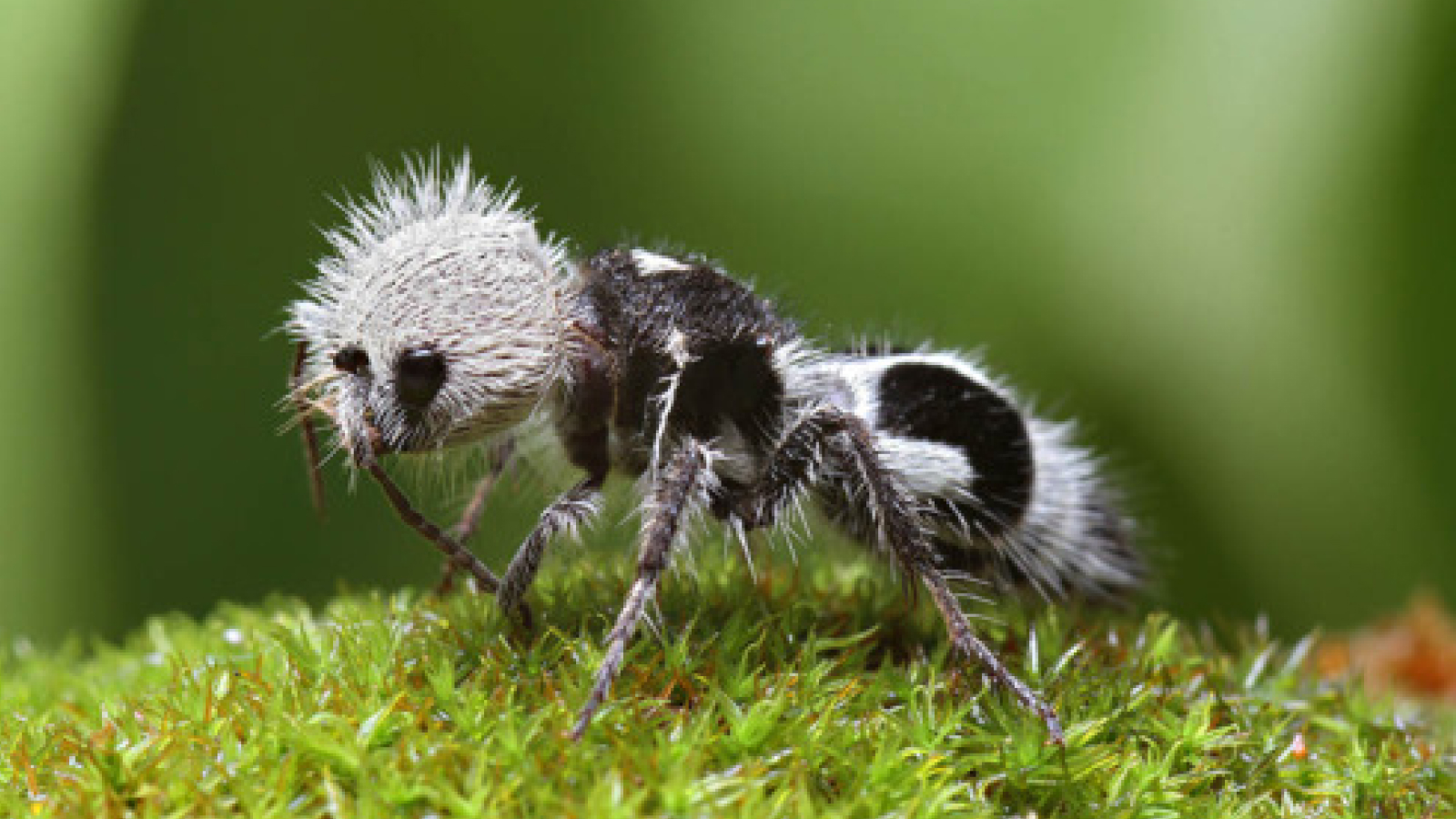
Name: Panda ant (Euspinolia militaris)
Where it lives: Chile
What it eats: Nectar from flowers, small insects
Why it's awesome: Despite the name, panda ants are a type of wasp belonging to the Mutillidae family, whose wingless females resemble large, hairy ants. They have a velvety white coat, with black spots around the eyes and body — similar to pandas (Ailuropoda melanoleuca).
This unusual coloring is generally only seen in females, according to National Geographic. It is aposematic, meaning it warns predators of its powerful, venomous sting, which isn't deadly to humans but can be very painful. Only females have stingers, which are roughly half the length of their 0.3-inch-long (8 millimeters) bodies, as they are modified egg-laying organs.
Like in all wasps, the stinger is smooth, meaning the insects can sting time and time again.
Panda ants don't form colonies but lead solitary lives in hot, dry coastal areas of Chile. They forage for food, which includes flower nectar and small insects, and they tend to live in sandy areas where they can easily hunt for food and find other insects’ nests to lay their eggs in.
Related: Ants perform life saving operations — the only animal other than humans known to do so
Panda ants mate in the air, with the winged males lifting the flightless females. It's not known exactly why they do this, but it may be to avoid predators, to stop other males mating with the female or to prevent the female from getting away.
Afterwards, females go underground to find a suitable place to lay their eggs. These insects don't create their own nest but instead lay their eggs in the nest of another insect, such as a ground bee or wasp. Once the panda ant eggs hatch, they consume the host's larvae. They then grow inside the nest, turning from larvae to pupa before becoming fully grown panda ants. A female panda ant can lay up to 2,000 eggs within her two-year life cycle.
Panda ants have another unusual skill — the ability to produce high-pitched sounds by rubbing together parts of their bodies such as their legs or antennae to warn off predators. Although other wasps from the Mutillidae family can produce similar sounds, the noise made by panda ants can reach ultrasonic levels. These noises may act as a mating signal, as well as keeping predators like rodents away.







